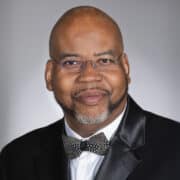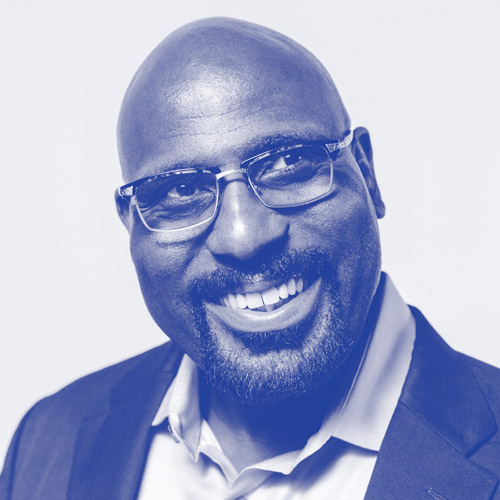For Andrew Peters, safety is about more than meeting regulations. It’s an ethical responsibility that ultimately leads to a better on-the-job performance of everyone he works with. To get everyone on the same team, Peters calls on his experience as a defensive lineman at West Virginia University, where he played for legendary college football coach Bobby Bowden. “I stand up and do a lot of town hall sessions where I try to win over employees’ hearts and minds like Coach Bowden won over ours,” says Peters, senior vice president and chief safety officer for AECOM. “He always made it crystal clear why we should do what he wanted us to do. I get to the heart of the matter.”
Peters leads the company’s worldwide safety, health, and environment (SH&E) organization, ensuring that all of AECOM’s projects, consultants, partners, and contractors have effective and coordinated safety and loss prevention. His efforts maintain a safe workplace during design, procurement, and construction projects at the multinational engineering firm.
“I would say the role I have today requires a lot of leadership, especially taking into consideration every company I have worked for has had quite a change management process,” says Peters, who previously served as vice president of SH&E at Parsons Corporation. “It’s taken a lot of leadership to move executives into position to accept a strong safety culture.”
This always circles back to what Peters learned about leadership from Bowden, who coached the Mountaineers from 1970 to 1975. Bowden later went on to coach at Florida State University, where he won two college football national titles. The coach, says Peters, relied on his senior players to set the tone for the whole team. Winning their hearts and minds meant winning over the whole team. “He was always stressing the importance of our leadership when I was a senior,” Peters says. “He made us feel special. We had separate meetings with him where he let us know how much he counted on us.”
That method obviously worked well for Bowden, who coached until he was eighty years old and compiled a 377-129-4 record. Peters recalls the impact it had on him in his final year on the gridiron. Pundits picked the Mountaineers to have a losing record in 1975. Instead, the team won twelve games, including the Peach Bowl. “He was very inspirational in that we never took the field thinking we would lose a game, no matter what the odds were,” Peters says.
A second foundational aspect of Peters’s career came during the summer between his junior and senior year at college. He earned a job with a construction company building surface facilities for a coal mining operation outside of Pittsburgh, Pennsylvania. A senior worker at the time was a major college football fan and took Peters under his wing encouraging him to make mining a career. So he did, taking a job with US Steel shortly after graduating from West Virginia.
One of the requirements of moving through the ranks at the company was being a miner for the first year-and-a-half with the company. From the start, the job exposed Peters to a culture that placed a high value on safety. It didn’t sugarcoat the risks, either. He remembers the orientation giving a vivid representation of what life underground would resemble. “About a third of the people in that class quit because they realized they weren’t ready for it,” he recalls.
Peters proceeded to get a firsthand look at all the reasons why workplace safety is vital. As the low man on the totem pole, he began working the midnight shift, paired as an apprentice with a veteran miner. “I wasn’t allowed out of his beam of light or else I would be terminated. After a couple of hours, it made sense why,” he says. “We were working in an artificial environment, breathing air pumped down to us from above ground. There was methane gas accumulation, huge equipment and small passages, a loose roof that could fall on you at any time, a lot of water, and electricity. There were so many ways you could die.”
Without a veteran miner to guide him, Peters wouldn’t have made it through his apprenticeship. Afterward, Peters went into US Steel’s management training program, where he was eventually leading three crews of miners as an assistant mine foreman. “That was a heavy responsibility because I got to know the crews,” he says. “You’re invited to their homes, go to picnics together, and get to know their kids and spouses. Their safety was in my hands. If I made the wrong move, it could be catastrophic and I’d be responsible for that. That’s when safety became a big deal to me.”
Peters relies on those early experiences with Bowden and at US Steel often in his current role with AECOM. The global infrastructure firm works in more than 150 countries worldwide, but it has tremendous safety standards thanks to Peters applying what he learned from coal mining that it easily meets and usually exceeds regulations no matter where it’s doing business.
Meanwhile, AECOM’s nearly 92,000 employees and business partners get the message of safety because Peters, like Bowden, is superb at winning hearts and minds. He applies the coach’s method of getting a smaller group to carry his message throughout the entire team. “My responsibility is getting stakeholder alignment—getting the client, the general contractor, all of their subcontractors and labor, and, in some cases, regulatory institutions on the same page,” he says. “Everyone needs to know where the bar is set.”
Peters often does this with an elevator pitch that features six tenets, which includes how a strong culture of safety saves everyone money, ensures compliance, and helps AECOM stand out from the competition. But the most important one, he says, ties to his time as an assistant mine foreman with US Steel, with the lives of three work crews depending on him. “From just a human kindness aspect, we have a responsibility to provide a safe workplace,” Peters says. “We can‘t feel good about who we are as a company if we’re not providing the best working environment possible.”














